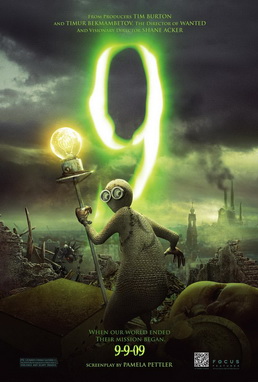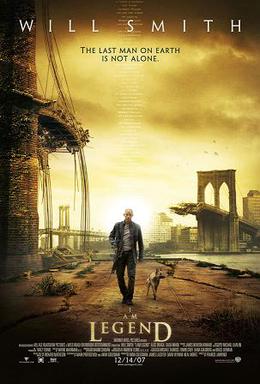The film “9” directed by Shane Acker was one of the most innovative films of 2009, maybe of recent history. With stunning visual effects and a style that was unique and creative, “9” instantly gained a place in my Film Criticism class, just on visuals alone. But something really intrigued (or bothered) me about “9”. The Uncanny Valley.
The Uncanny Valley is a theory that holds that “when robots and other facsimiles of humans (homunculi) look and act almost like actual humans, it causes a response of revulsion among human observers. The "valley" in question is a dip in a proposed graph of the positivity of human reaction as a function of a robot's lifelikeness.” Basically the Uncanny Valley is when a non-human object takes on human characteristics and either performs them so poorly as to appear garish and unreal, or too well causing an uncomfortable feeling of all too familiarity. It is easy to understand the Uncanny Valley. Compare R2-D2 to Wall-E. Which seems more human? I’d have to argue for Wall-E as he has more “human” qualities. Now compare Wall-E to a Terminator…
In the film “9” we have what Acker calls “stitchpunk” characters that are made up of burlap sack like material and clockwork gears. There are nine characters all together, and *spoiler alert* they are comprised of fractions of the Scientist’s soul (he was their creator, and one of the last living humans). Because these little creatures are imbued with human spirit, they act and behave as fractions of that spirit. It makes one think when boiled down to bare essentials, what are we? One of the more disconcerting scenes is when the burly and brutish character with the designation of “8” is deriving some kind of pleasure from running a magnet over his head. Whether it was like a drug, or sexual in nature, we as an audience quickly learn it was a bad idea, because “8” does not survive the next five minutes. But of all the dystopic scenes throughout the film, Armageddon, skeletons, Matrix-esque robot killers and so on, this scene seemed to disturb me the most. Also the scenes with “6”, the demented artist portion of the group, were also specifically creepy. I think it is due to the fact that these characters are doing some very human things.
Films like “9” can be inspiring for writers because the world of “9” is so rich, that our imaginations begin to fire on all cylinders. But also, the little things, like getting high from a magnet, can make us really consider Character, and how our characters are illustrated and portrayed in our own work. What basic human needs are being fulfilled? Denied? When you see something “uncanny” or disconcerting, it might be wise to explore those feelings, name them, and write them into our work.





